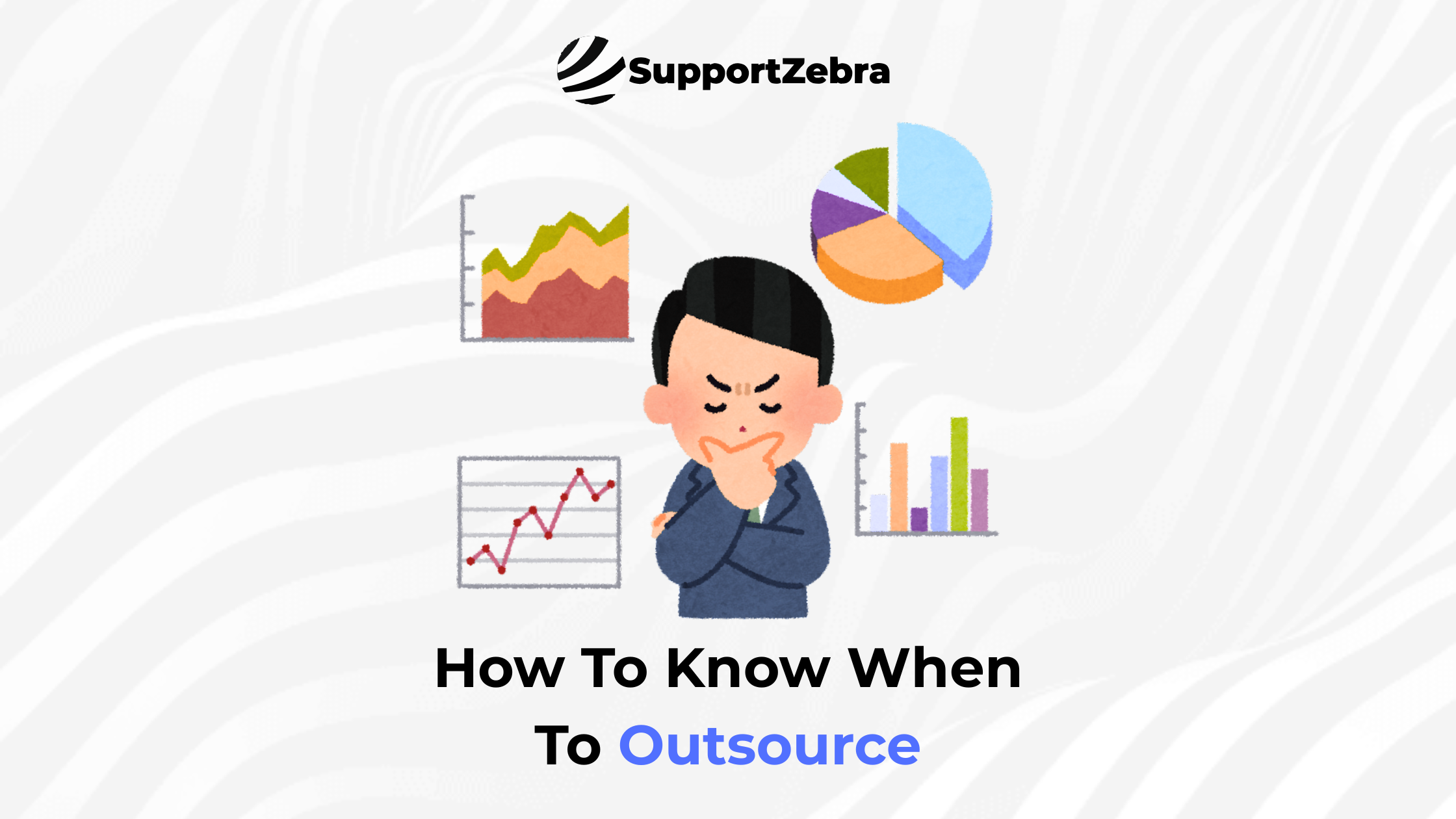Signs To Look Out For To Know It’s Time to Outsource Your Business Tasks
- Outsourcing helps businesses overcome challenges like declining productivity, lack of expertise, and limited resources.
- By delegating time-consuming or specialised tasks, companies can focus on core priorities and long-term growth.
- It’s time to consider outsourcing when your business faces inconsistent quality, rapid growth, or rising operational costs.
- Smart outsourcing solutions, like those from SupportZebra, offer flexibility, expert talent, and cost savings for sustained success.
Are you constantly overwhelmed by a never-ending to-do list or feeling pressured to find experts for specific tasks in your company? Outsourcing is the solution you need. Outsourcing can revolutionize business operations by delegating business functions to external providers. But it’s crucial to recognize the right time to outsource.
Let’s explore the signals indicating when to outsource your business responsibilities and discover how this decision can increase productivity, effectiveness, and expansion.
1. Declining Productivity
Outsourcing some of your tasks might be a good idea if productivity is decreasing. Signs like lower output, increasing labor costs, delays, frequent mistakes, and unhappy employees indicate inefficiencies in your organization. These problems could be due to bad time management, too much focus on unimportant tasks, or a lack of employee engagement.
High turnover rates indicate employees are not fully invested in their work. By outsourcing, you can tackle these challenges, cut costs, and enhance overall performance, leading to better efficiency and growth. Spotting these warning signs early allows you to take action and improve your business’s success.
2. Lack of Specialized Skills
If your team doesn’t have the right specialized skills, it can slow down your business’s growth and efficiency. Important jobs like digital marketing, software development, graphic design, financial analysis, and customer support need experts to get good results.
Without these skills, you might face lower productivity, missed deadlines, project delays, and unhappy customers. This can also lead to higher costs, harm your reputation, and cause more employees to leave. To prevent these problems, investing in a talented workforce that keeps everything running smoothly and helps your business succeed is crucial.
3. Limited Resources
Limited resources can keep your business from satisfying customer demands, developing new ideas, and expanding. Poor use of resources, lost chances, and high staff turnover can hurt your reputation and profits.
Outsourcing can help by providing affordable external services, expert knowledge, and adaptability. This allows you to concentrate on your main tasks and long-term objectives, keeping you competitive and successful in the future.
4. Time-Consuming Tasks
Tasks that take a lot of time, such as entering data by hand, dealing with paperwork, and attending meetings, can use up resources and make a business less efficient. These activities can increase labor costs, decrease customer satisfaction, and even harm the company’s reputation.
To boost productivity, it’s important to concentrate on the most important tasks and think about outsourcing tasks that aren’t central to the business. This way, you can save time and resources for what counts.
5. Inconsistency in Quality
Inconsistent quality can negatively impact customer satisfaction, damage the brand’s reputation, and reduce repeat business. It results in uneven performance, different levels of customer service, and bad reviews.
To address this issue, it’s important to identify the main problems, implement quality control measures, properly train staff, and create feedback systems to ensure consistency and foster trust.
6. Rapid Growth
Rapid growth can strain your resources, resulting in increased labor costs, employee burnout, and a drop in the quality of work. To tackle this issue, think about outsourcing. It can lower labor expenses, offer expert skills, and enhance the customer experience. Outsourcing can make your operations scalable, guarantee top-notch work, and increase customer satisfaction and loyalty.
7. Cost Considerations
Outsourcing is a great way for companies to save money. It lowers labor and infrastructure costs, provides access to specialized skills, and allows for more flexibility in resource use. This strategy lets businesses concentrate on their main activities, take advantage of larger-scale operations, and reduce risks.
By outsourcing, companies can decrease overhead expenses, avoid the need for extra office space, and promote growth. Overall, it’s a wise financial decision for any business.
8. Focus on Core Competencies
Outsourcing tasks that aren’t central to your business allows you to concentrate on the important stuff—strategy, innovation, and growth. It makes things run more smoothly, improves quality, and saves money using experts in specific areas, so you don’t have to worry about hiring and training new staff. This method increases your competitiveness and helps your business perform at its peak.
9. Change in Business Needs
Outsourcing is a smart strategy for keeping up with businesses’ ever-changing demands. It allows you to take on new responsibilities, ensure you follow the rules, and foster creativity in a tough market.
By pinpointing which tasks to outsource, you can better respond to changes in customer preferences, technological advancements, and evolving industry norms while keeping your operations running smoothly and staying one step ahead of your rivals.
10. Technological Advancements
Technology is changing businesses’ operations, boosting efficiency, creativity, and competitiveness. By outsourcing, you can keep up with progress in areas like automation, artificial intelligence, the Internet of Things, and cybersecurity.
Utilizing these technologies allows you to cut costs, improve your ability to bounce back, and remain flexible in a rapidly changing market.

Why Smart Businesses Choose SupportZebra for Outsourcing Success
Outsourcing can transform your business operations. If you’re experiencing productivity drops, skill shortages, limited resources, or rising costs, consider outsourcing. This approach can enhance efficiency, provide expert support, and help you maintain a competitive edge.
At SupportZebra, we offer a customized outsourcing solution, allowing you to select team members who align with your goals. Our skilled, English-speaking agents deliver exceptional service tailored to your needs. With flexible pricing, no long-term commitments, and 24/7 support, we help businesses scale and improve customer experiences.
Let us handle your outsourcing needs so you can focus on growth. Contact SupportZebra today for reliable, cost-effective solutions that deliver results.

